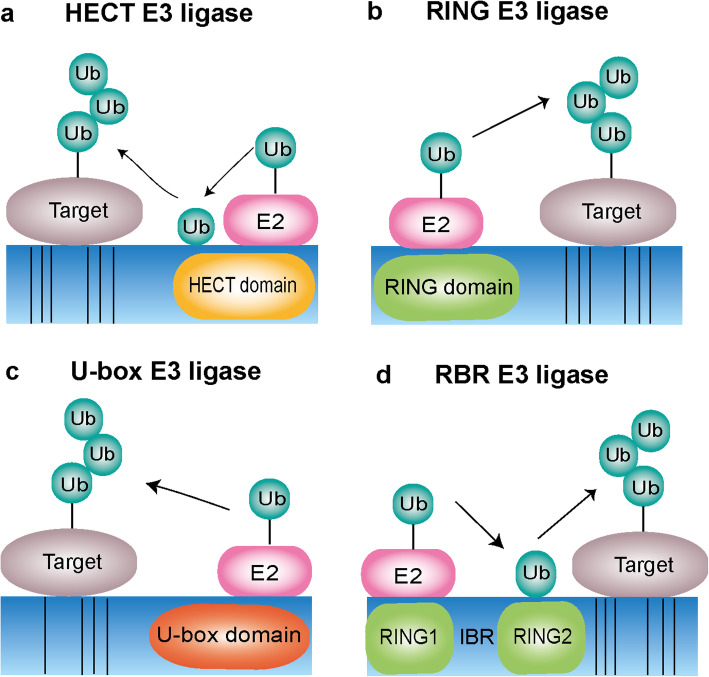Fig. 3.
Types of ubiquitination ligases. a The HECT type E3 ligases contain the conserved C-terminal HECT domain and the N-terminal consists with different domains depending the specific subtype. HECT type E3 ligases involved ubiquitination process including a two-step reaction: ubiquitin is first carried by E2 ligase binding to the HECT domain and then transferred to a catalytic cysteine on the E3 ligase, the second step is the transfer of ubiquitin from the E3 ligase to the substrate. b The RING type E3 ligases are characterized by the presence of a zinc-binding domain called RING at the N-terminal. RING E3s mediate a direct transfer of ubiquitin from E2 ligase to the substrate. c The U-box type E3 ligases contain U-box domain at the C-terminal which is responsible for binding the ubiquitin-charged E2 ligase and stimulating ubiquitin transfer. d The RBR type E3 ligases consist of two predicted RING domains (RING1 and RING2) separated by IBR domain . RBR E3 ligases catalyzed ubiquitination process involves a two-step reaction where ubiquitin is first transferred to a catalytic RING2 domain on the E3 and then to the substrate

